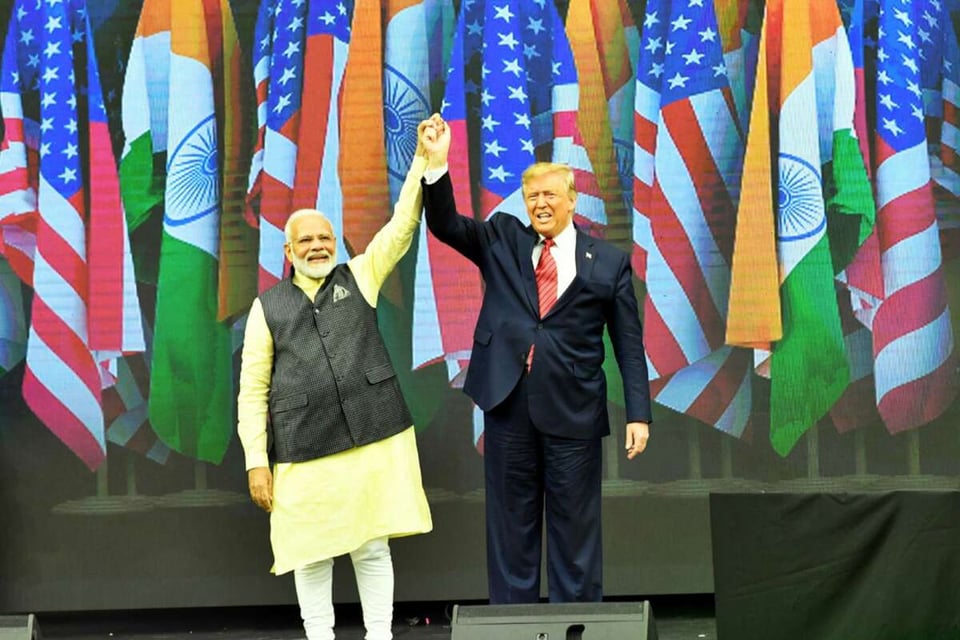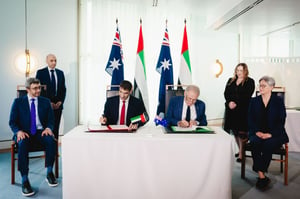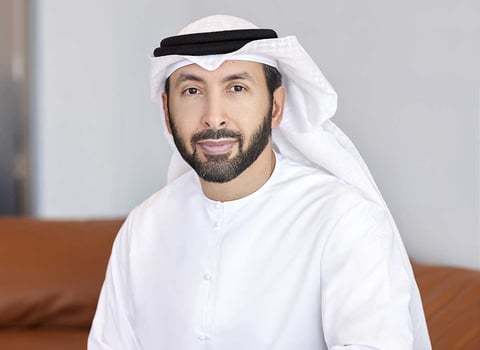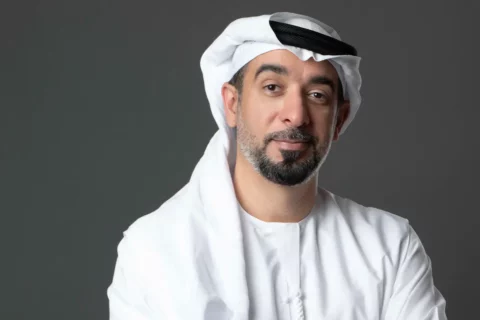Indian Prime Minister Narendra Modi announced that the United States (U.S.) and India have set an ambitious target of doubling their bilateral trade to $500 billion by 2030. Both nations are committed to finalizing a mutually beneficial trade agreement in the near future. This announcement follows an agreement made on Thursday, where the two governments agreed to initiate discussions aimed at securing an early trade deal and addressing ongoing tariff disputes. New Delhi has expressed its commitment to purchase more U.S. oil, gas, and military equipment while also tackling illegal immigration.
Trade agreement goals
“We have … set ourselves the target of more than doubling our bilateral trade to attain $500 billion by 2030. Our teams will work on concluding very soon, a mutually beneficial trade agreement,” Modi stated.
A series of agreements have emerged following discussions between U.S. President Donald Trump and Indian Prime Minister Narendra Modi at the White House. This meeting took place shortly after Trump expressed concerns regarding the business climate for U.S. companies operating in India and introduced a framework for reciprocal tariffs on nations imposing duties on U.S. imports. “Prime Minister Modi recently announced the reductions to India’s unfair, very strong tariffs that limit us access to the Indian market, very strongly,” Trump remarked. “And really it’s a big problem I must say.”
Read more: China retaliates with targeted tariffs after Trump imposes addition 10 percent charge
Timeline for trade resolution
India’s Foreign Secretary Vikram Misri indicated that a resolution concerning trade issues could be reached within the next seven months. A joint statement issued after the meeting noted that Washington welcomed New Delhi’s recent initiatives to lower tariffs on select U.S. products and enhance market access for U.S. agricultural goods. The goal is to negotiate the initial segments of a trade deal by the fall of 2025.
Perspectives on tariffs
While both leaders “had their perspectives” on tariffs, “what is more remarkable…is the fact that we have a way forward on this issue,” Misri emphasized. Some agreements reached by the leaders are aspirational: India seeks to significantly increase its purchases of U.S. defense equipment, potentially making Washington the “number one supplier” of oil and gas, as Trump noted during a joint press conference with Modi. Modi reiterated the goal to double trade with Washington by 2030, while long-discussed cooperation on nuclear energy remains entangled in ongoing legal challenges.
Reciprocal trade policies
“We are being reciprocal with India,” Trump asserted during the press conference. “Whatever India charges, we charge them.” Modi promised to safeguard India’s interests, stating, “One thing that I deeply appreciate, and I learn from President Trump, is that he keeps the national interest supreme. Like him, I also keep the national interest of India at the top of everything else.”
Security cooperation and technology
The two leaders commended each other and agreed to enhance security cooperation in the Indo-Pacific region, which subtly references competition with China. They also discussed initiating joint production in emerging technologies such as artificial intelligence. Prior to their meeting, one source characterized India’s actions as a “gift” for Trump, intended to alleviate trade tensions. A Trump aide indicated that the president views defense and energy sales to India as a means to reduce the U.S. trade deficit.
Increasing energy trade
India’s energy purchases from the United States could rise to $25 billion in the near future, up from $15 billion last year, according to Misri. He added that this increase could help in mitigating the trade deficit. Tariffs are expected to continue to influence the relationship between the two countries, as noted by Richard Rossow, head of the India program at the Center for Strategic and International Studies, a think tank. “It’s going to be a boxing match,” he stated. “India is willing to take a few hits, but there’s a limit.”
According to Reuters, the U.S. currently faces a $45.6 billion trade deficit with India. Overall, the U.S. trade-weighted average tariff rate has hovered around 2.2 percent, based on data from the World Trade Organization, while India’s rate stands at 12 percent.








